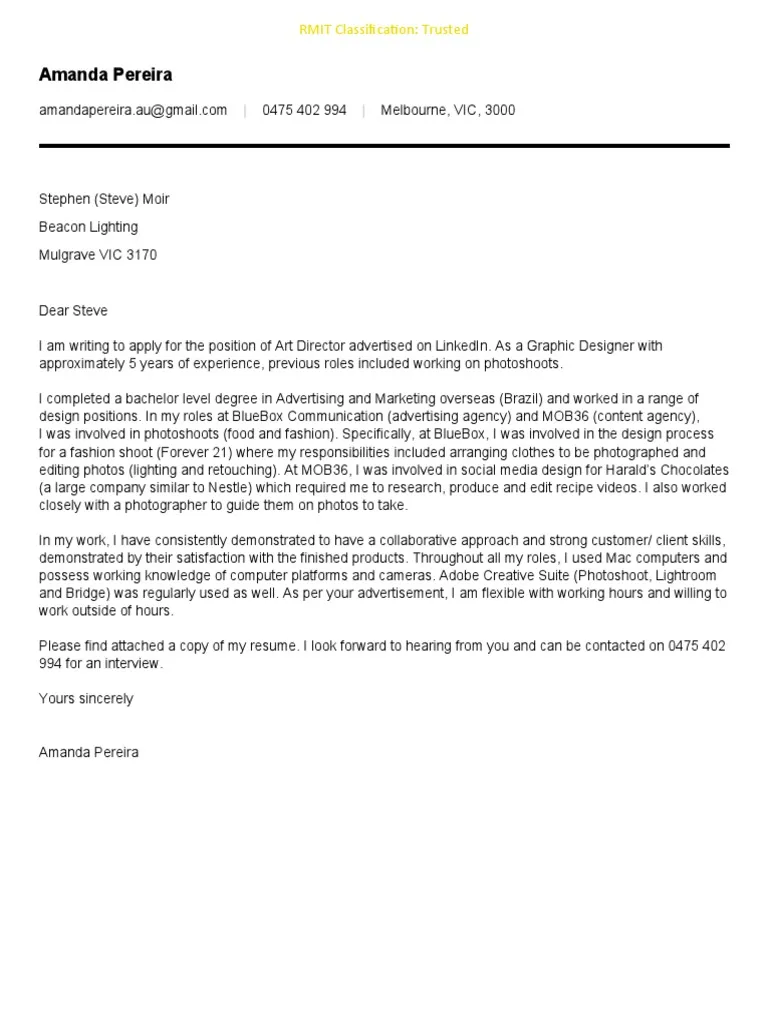What is a Cover Letter (and Why Do You Need One)?
A cover letter is a crucial document that accompanies your resume when you apply for a job. It serves as your first introduction to a potential employer and provides an opportunity to highlight your skills, experiences, and personality. Unlike a resume, which is a factual summary of your qualifications, a cover letter allows you to elaborate on your experiences and express your genuine interest in the specific role and company. Think of it as your personal sales pitch, designed to convince the hiring manager to read your resume and invite you for an interview. A well-crafted cover letter can significantly increase your chances of landing an interview and ultimately securing your dream job. It’s a chance to make a strong first impression and differentiate yourself from other candidates.
Key Components of a Cover Letter
A standard cover letter typically includes several key components that work together to create a compelling narrative. These elements are essential for presenting yourself effectively and making a positive impression on the hiring manager. Understanding the purpose of each component and how they contribute to the overall message is key to writing an outstanding cover letter. The following sections provide a detailed breakdown of these crucial components.
Header and Contact Information
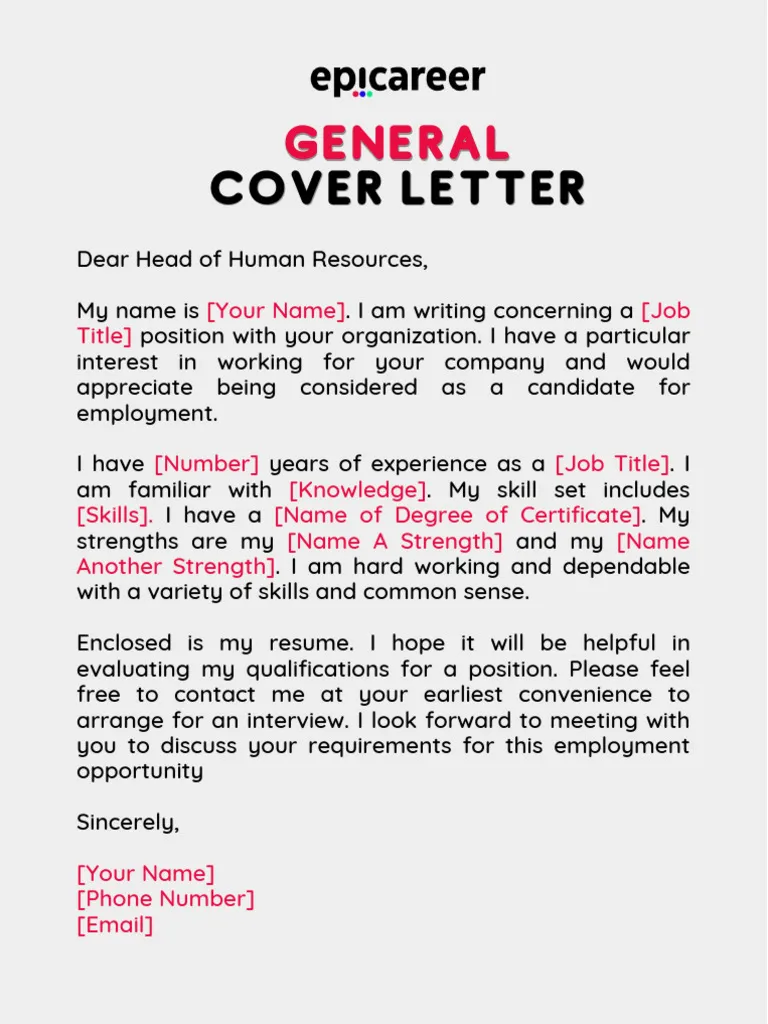
Your cover letter should begin with a professional header containing your contact information. This usually includes your full name, phone number, email address, and optionally, your LinkedIn profile URL or personal website. Make sure the contact information is easy to find and accurate. Below your information, include the date and the hiring manager’s name, title, and the company’s address if you have it. This helps the hiring manager quickly identify who the letter is from and how to reach you.
The Salutation
The salutation is the greeting of your cover letter. Ideally, you should address the hiring manager by name. Research the company’s website or LinkedIn to find out the name of the hiring manager or the person responsible for reviewing applications. Use ‘Dear Mr./Ms./Mx. [Last Name]’ if you know their name. If you can’t find a specific name, use a professional alternative, such as ‘Dear Hiring Manager’ or ‘Dear [Department Name] Team’. Avoid generic greetings like ‘To Whom It May Concern’, as they can make your letter seem impersonal.
The Opening Paragraph: Grab Their Attention
The opening paragraph is your chance to immediately capture the reader’s attention. Start with a strong statement that clearly states the position you’re applying for and how you learned about it. Mentioning a referral, if applicable, can also be a great way to make an impression. In this paragraph, briefly highlight your most relevant skills or experiences and express your enthusiasm for the opportunity. The goal is to create an immediate positive impact and entice the reader to continue reading.
Body Paragraph 1: Why You’re a Great Fit
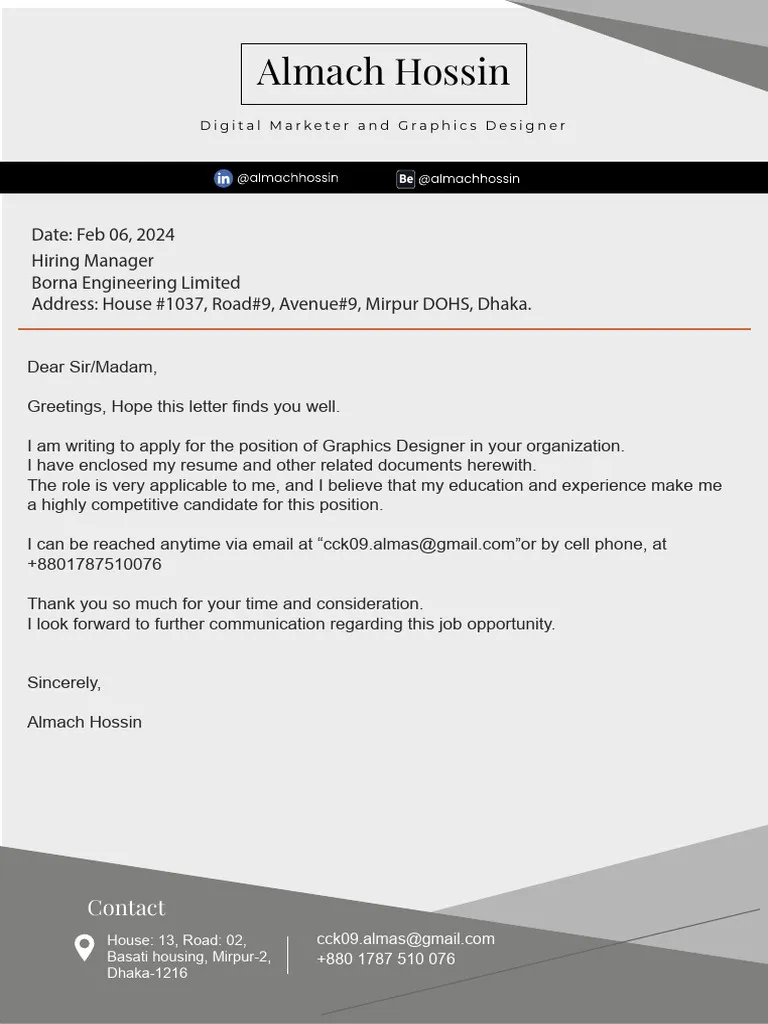
The first body paragraph should explain why you are a great fit for the role. This is where you connect your skills and experience to the job requirements. Review the job description carefully and identify the key qualifications the employer is seeking. Then, provide specific examples from your past experiences that demonstrate how you meet those requirements. Use a combination of skills and accomplishments to show that you not only possess the necessary abilities but also have a track record of success. Quantify your achievements whenever possible to make your claims more compelling.
Body Paragraph 2: Showcase Your Skills
In the second body paragraph, delve deeper into your skills and how they align with the company’s values and goals. This is where you can show your soft skills, technical abilities, and any other relevant expertise. Provide specific examples that illustrate how you have used these skills in the past to achieve positive results. Focus on the skills that the employer values most and tailor your examples to the specific requirements outlined in the job description. This helps showcase your ability to excel in the role and contribute to the company’s success.
Body Paragraph 3: Highlight Achievements
The third body paragraph is the opportunity to highlight your achievements and demonstrate the value you can bring to the company. This is where you can use the STAR method (Situation, Task, Action, Result) to describe a specific accomplishment and its impact. Briefly describe the situation, explain the task you were assigned, detail the actions you took, and highlight the results you achieved. Quantify your results whenever possible (e.g., increased sales by 15%, reduced costs by 10%). This will provide concrete evidence of your capabilities and make a strong impression on the hiring manager.
The Closing Paragraph: Call to Action
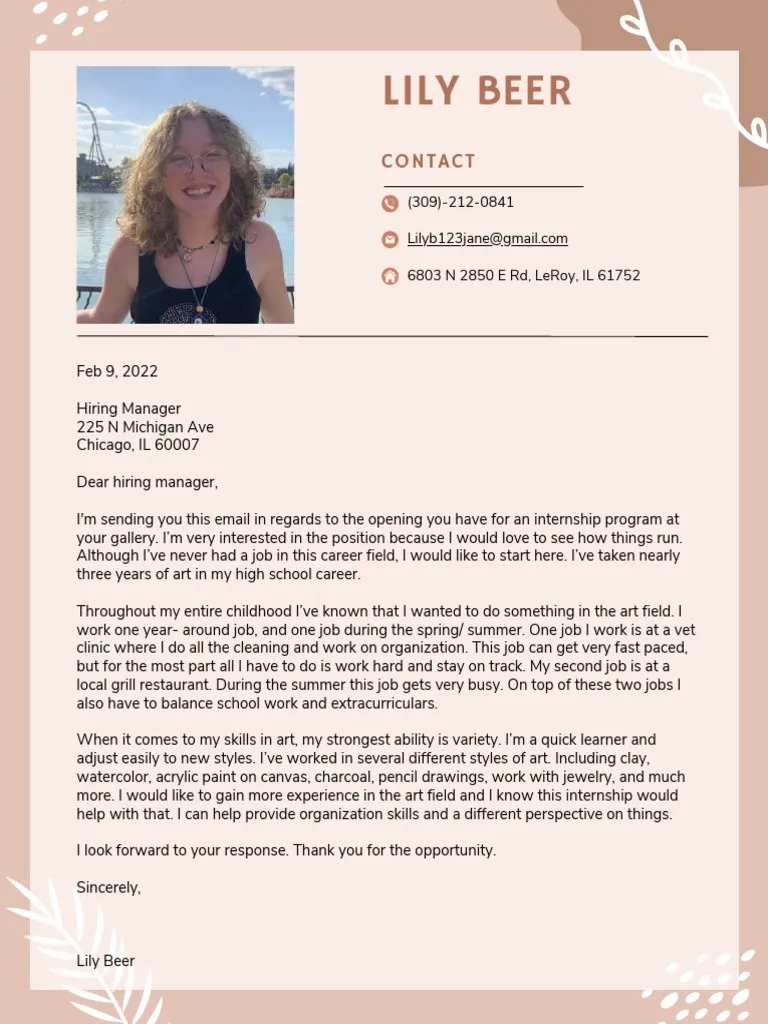
The closing paragraph should reinforce your enthusiasm for the position and the company. Express your interest in an interview and reiterate how you can contribute to their team. Thank the hiring manager for their time and consideration. Include a clear call to action, such as ‘I look forward to hearing from you soon’ or ‘I am eager to discuss how my skills and experiences can benefit your company’. End the letter with a professional closing, such as ‘Sincerely’ or ‘Best regards’, followed by your full name.
Formatting Your Cover Letter for PDF
Formatting your cover letter correctly is crucial for making a good first impression. A well-formatted cover letter demonstrates attention to detail and professionalism. Using PDF format is the most recommended way to send a cover letter. Here are several formatting tips to keep in mind:
Choosing the Right Font and Size
The font and size you choose for your cover letter can significantly impact readability. Select a professional and easy-to-read font, such as Times New Roman, Arial, Calibri, or Helvetica. Keep the font size between 10 and 12 points. Avoid using overly ornate or unusual fonts, as they can be difficult to read. Ensure consistency in font size and style throughout the document.
Margins and Spacing
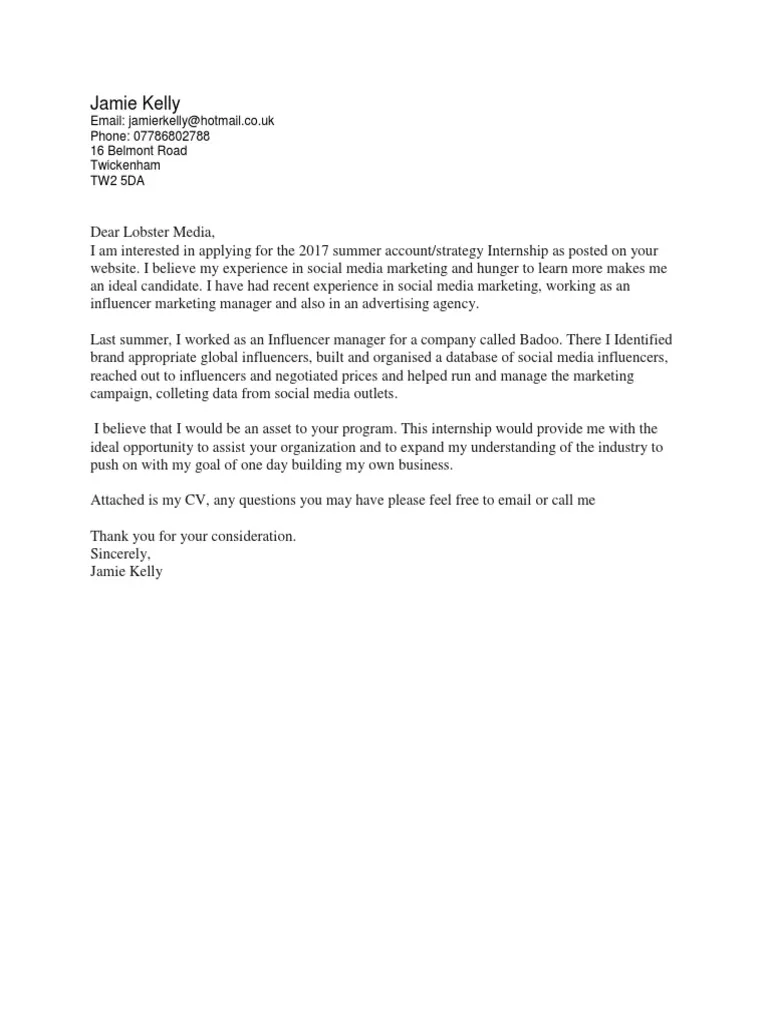
Proper margins and spacing enhance the visual appeal and readability of your cover letter. Use 1-inch margins on all sides of the document. This provides a clean, uncluttered look. Use single spacing within paragraphs and double spacing between paragraphs. These spacing guidelines help the reader easily scan and digest the information.
Proofreading and Editing Your Cover Letter
Proofreading and editing your cover letter is a critical step. Spelling and grammar errors can reflect poorly on your application. Always proofread your letter multiple times and use a spell-checker. Ask a friend or family member to review the letter for any mistakes or areas for improvement. Ensure your language is professional and your tone is appropriate. Proofreading helps you present a polished and professional image.
Common Cover Letter Mistakes to Avoid
Avoiding common cover letter mistakes is essential for making a positive impression on hiring managers. Many mistakes can detract from your application, so being aware of them and actively working to avoid them is very important. Common mistakes will be described in this section.
Using Action Verbs
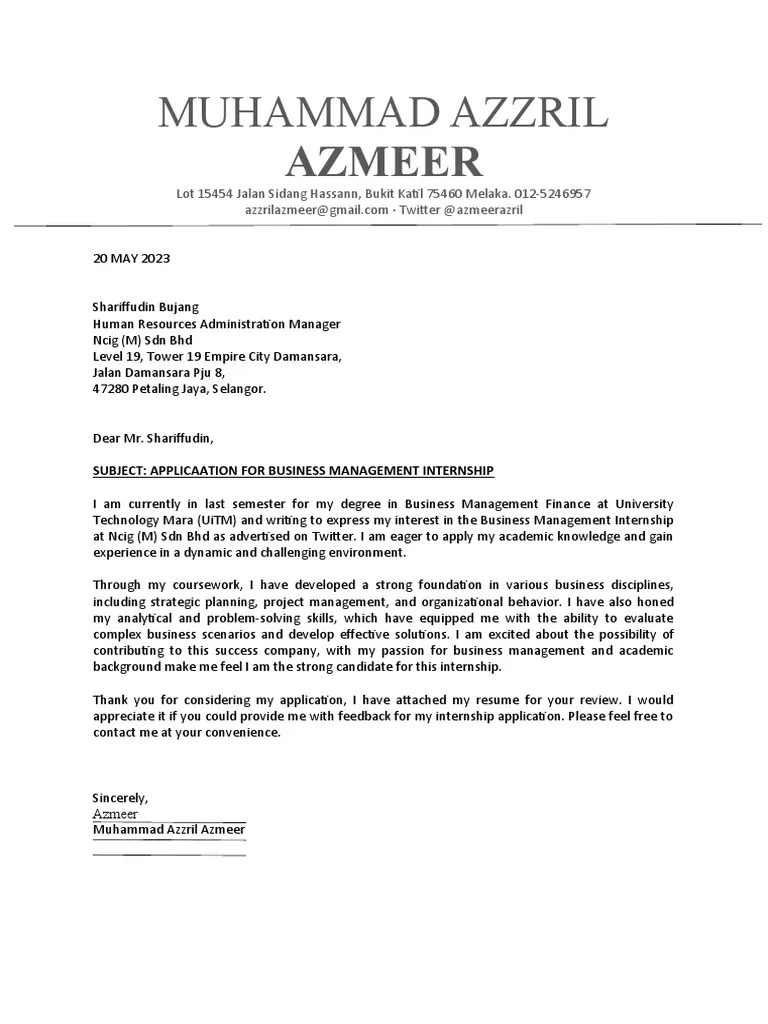
Using strong action verbs in your cover letter can make your achievements more impactful. Action verbs describe what you did and show you’re proactive and results-oriented. Instead of writing, ‘Responsible for project management,’ write, ‘Managed projects, delivering them on time and under budget.’ Starting your sentences with action verbs makes your accomplishments more dynamic and engaging. Use a variety of verbs to keep the letter interesting and show a broad range of skills.
Tailoring Your Cover Letter
Avoid using a generic cover letter for all applications. Always tailor your letter to each specific job and company. This shows that you have taken the time to understand the role and the organization’s needs. Customize the letter by referencing the job description, highlighting relevant skills, and explaining why you are the best fit for the specific opportunity. Customization demonstrates genuine interest and increases your chances of being noticed.
Cover Letter Examples for Various Industries
Finding the right template for the job is very important, and in this section, you will find examples for several industries. Refer to this section for examples, templates, and tips that can guide you in making your perfect cover letter.
